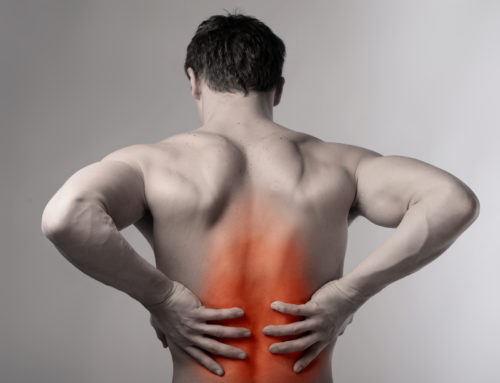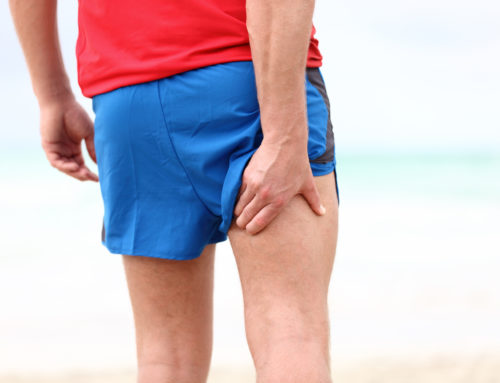 Learning the common sciatica symptoms can make a lot of difference to your prognosis. Are you familiar with the key signs? Sciatica is known for causing pain in the lower back and down into the leg usually due to an irritation or some type of pressure impacting the sciatic nerve. This is the largest nerve in the body and is about the size of the little finger. It runs from the spinal cord starting in the lumbar region of the lower back, throughout the buttocks, and down into the back of the leg. Usually, only one leg is affected by sciatica pain. The pain may go as far as the ankle and foot.
Learning the common sciatica symptoms can make a lot of difference to your prognosis. Are you familiar with the key signs? Sciatica is known for causing pain in the lower back and down into the leg usually due to an irritation or some type of pressure impacting the sciatic nerve. This is the largest nerve in the body and is about the size of the little finger. It runs from the spinal cord starting in the lumbar region of the lower back, throughout the buttocks, and down into the back of the leg. Usually, only one leg is affected by sciatica pain. The pain may go as far as the ankle and foot.
The sciatic nerve is not only the largest but also the longest nerve and has many vital jobs to do in relation to carrying signals to and from the brain and the legs. Because it is so long, it is more susceptible to enduring injury along its path. It only takes a small amount of pressure to cause a great amount of pain. We are going to look at 10 different ways to recognize sciatica, and then we will discuss a way to care for it that is natural and non-invasive.
Table of Contents
The Top 10 Sciatica Symptoms
- Pain in the lower back: This is one of the most prominent sciatica symptoms, the pain felt in the lower back region has to do with pressure on the sciatic nerve at a specific location. This pain may be dull, aching, sharp, or stabbing. The pain can increase when you move in a certain position. What happens is an inflamed area of tissue, a bone, or a herniated disc is trapping and pinching the nerve.
- Pain in the buttocks: We stated above that the sciatic nerve is the longest and largest in the entire body, and it has the important job of sending signals to the brain about what is going on in the legs. Signals constantly travel from the brain to the legs and from the legs to the brain via the sciatic nerve. Pain can be felt anywhere along the large sciatic nerve, including shooting pain in the buttocks, making it difficult to sit, stand, or squat, among other things.
- A burning sensation: Nerves have a big responsibility to carry all kinds of information. They are not just there to tell you that you are hurt, but they also relay to the brain how much something weighs that you are carrying, what is touching your skin, how fast your legs are moving, and similar information. Knowing this helps you to understand why your legs can also experience a number of other sensations, depending on how the signal is being scrambled. This is where the burning sensation comes in. It is almost as if you were experiencing an allergic reaction and is extremely uncomfortable and unpleasant.
- Tingling: If you have ever woken up at night feeling like your arm or leg is “dead” or extremely numb, then you know the feeling we are talking about. This happens when your nerves have been crushed or deprived of blood flow and can be referred to as a pins and needles sensation. The area can be numb, tingly, and hard to move.
- Numbness: Often going along with tingling, numbness can be a very odd sensation, and if you touch the numb area, you might notice a kind of buzzing sensation or you may not be able to feel it at all. This happens because information is not able to reach your brain because of the blockage of the nerve being pinched. You can imagine it like taking the cable that goes into the back of your TV and scrambling it slightly. The picture may come through somewhat but it will be fuzzy and incomplete.
- Weakness: Weakness is also related to numbness and tingling. It makes sense that when a part of your body feels this way, it can also become weakened and is not so easy to move. You may find that the affected leg does not always cooperate when walking on stairs or moving in general. It is very unlikely you will have a total loss of movement.
- Problems standing: If you have both weakness in the muscles and pain, accompanied by tingling and numbness, you will most likely have trouble standing. You may experience a sharp, stabbing pain or a dull, aching pain when trying to stand.
- Shooting pain: As mentioned, this may occur when standing up or sitting down. It is caused by a sudden movement or position change that results in the nerve being pinched.
- Hip pain: This is another very common symptom. You may struggle with hip pain for a long time before you realize why it is occurring. Many times, hip pain is not associated with sciatica. Remember, however, that the pain of sciatica can be anywhere between the lower back and the legs, including the hips.
- Swelling: You may be surprised to learn swelling is not actually caused by sciatica but occurs at the same time. This is due to the fact that sciatica is caused by pressure on the sciatic nerve, possibly caused by swelling due to a fracture, a trauma, or a sprained muscle.
Finding Natural Relief for Sciatica
Do you have any of the sciatica symptoms we listed above? If yes, you can try seeking our all natural method. It basically involves correcting your neck alignment.
Oddly enough, this pain in the lower back can be due to a misalignment in the bones of the upper neck. Since the spine is made up of muscles, ligaments, and joints working together as one, a misalignment in the neck can cause a person to have improper posture. This can lead to inflammation or irritation and a shifting of the bones of the spine, causing nerves to become pinched.
Here at Upper Cervical Chiropractic San Diego in San Diego, California, we use a gentle method that realigns the neck bones without the use of force. This way, you can deal with your sciatica symptoms as soon as possible. We do not need to crack the neck to get results. Once corrected, the muscles are allowed to heal, and the pain of sciatica often improves greatly.
To schedule a consultation with Upper Cervical Chiropractic San Diego, call 858-434-5926 or just click the button below.
If you are outside of the local area you can find an Upper Cervical Doctor near you at www.uppercervicalawareness.com.







